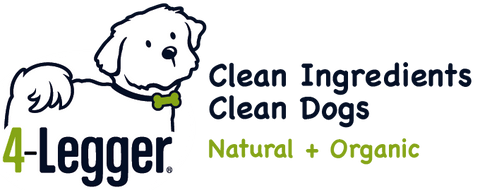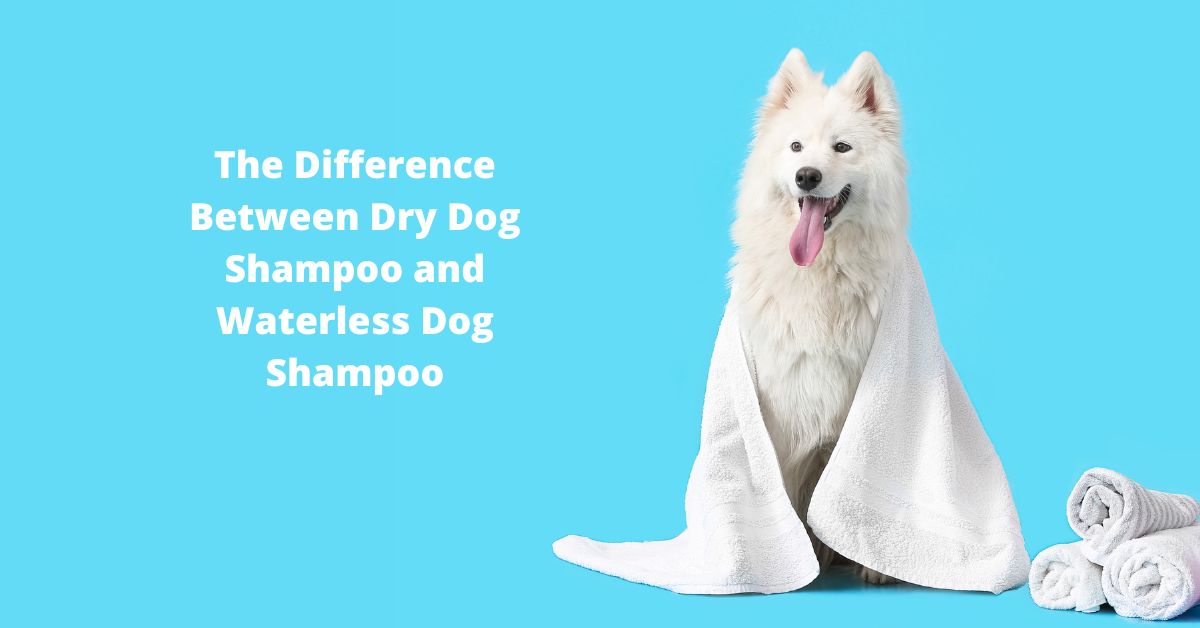The Difference Between Dry Dog Shampoo and Waterless Dog Shampoo

This week I saw a Facebook post in one of the holistic pet groups where someone asked, "Any opinions on dry shampoo for your dog?"
There were a lot of comments on the chemicals in these shampoos and which brands make safer options.
While most people commented that they use waterless dog shampoo instead of dry dog shampoo, they did note that they were worried about the chemicals they were putting on their dog when using either dry dog shampoo or waterless dog shampoo.
They have good reason to be worried about some of these ingredients, especially those in the waterless dog shampoos.
Let's dig a little deeper.
The Difference Between Dry Dog Shampoo and Waterless Dog Shampoo
Dry dog shampoo and waterless dog shampoo are terms often used interchangeably, but they are not the same.
Let's look at the differences.
Dry Dog Shampoo:
- How it Works: Primarily works by absorbing excess oils and moisture from the dog's coat, which can help to reduce odors. The ingredients in the powder or added fragrance or essential oils can neutralize some odors and make the coat appear cleaner. However, it does not provide the same level of cleaning as traditional wet shampoos that remove dirt, debris, bacteria, and environmental toxins from the skin and fur and are rinsed away.
- Usage: Primarily marketed for dogs that are anxious around water or for quick clean-ups between regular baths.
- Ingredients: Often includes absorbent materials like cornstarch, baking soda, arrowroot powder, clay, or other powdered substances to soak up oils and odors.
-
Application: Lightly sprinkle a small amount of the powder on your dog and massage it into the fur, avoiding the eyes. You let it sit for a few minutes and towel off the excess dry shampoo. You can brush until you don't see the powder anymore.
Using too much of the dry shampoo may cause skin irritation and make your dog itchy by soaking up too much of the natural skin oils which dries out the skin.
If your dog has sensitive skin, you should avoid dry shampoo as it is a stay-on product.
- Summary: If necessary, it’s recommended to use dry shampoo only as a supplementary grooming tool during winter months rather than the primary method of grooming and you need to be very aware of the ingredients in order to choose a dry shampoo product that is free from harmful chemicals. We do not recommend the use of dry shampoo as a replacement for a water bath.
-
How it Works: Waterless foaming dog shampoos contain ingredients designed to break down and bind to the dirt and oils in the dog's fur and coat so they can be wiped away.
With this type of product, the ingredients stay on the dog's skin and coat and are also not washed off. These products do not provide the same level of cleaning as traditional wet shampoos that remove dirt, debris, bacteria, and environmental toxins from the skin and fur and are rinsed away. - Form: Usually comes in a liquid or foam form.
- Application: Avoiding the eyes, nose, mouth, and inside of the ears, you can apply the foam or spray directly to the dog's coat, usually starting with the neck and working your way down to the tail. The product is applied directly to the dog's coat, massaged in, and then either towel-dried or allowed to air dry. This will bind to the dirt, oil, and debris. You will use a towel or brush to remove the residue but much of the product will stay on the dog's skin and coat.
- Usage: Similar to dry shampoo, it is marketed as a product to be used between traditional baths or even in place of regular baths.
- Ingredients: Typically have more toxic ingredients than dry dog shampoo or regular dog shampoo.
- Summary: We do not recommend waterless dog shampoos.
As you can see, dry dog shampoo and waterless dog shampoo are very different from one another.
My single biggest issue with both dry dog shampoo and waterless dog shampoo is they are "leave on" products.
Leave-on dog wash products like waterless and dry dog shampoos can pose several problems for both pets and their owners. These products often leave a residue on the dog's coat, which can attract dirt and debris, ultimately making the dog dirtier over time.
Additionally, the chemicals and fragrances used in these products may cause skin irritation or allergic reactions in some dogs, leading to discomfort and potential health issues. Without the rinsing action of traditional bathing, these products may not effectively remove all the oils and impurities from the dog's skin and fur, which can result in an unhealthy coat.
Moreover, some ingredients might be harmful if ingested by dogs, which is a big concern since dogs will lick their fur. Therefore, while convenient, waterless and dry shampoos may not be the best choice for maintaining a dog's skin and coat hygiene and overall health.
This is especially important in the summer months when you will likely need to increase the frequency of bathing your dog to minimize the excessive use of chemical toxins to control weeds and insects in your dog's environment. Learn more here.





